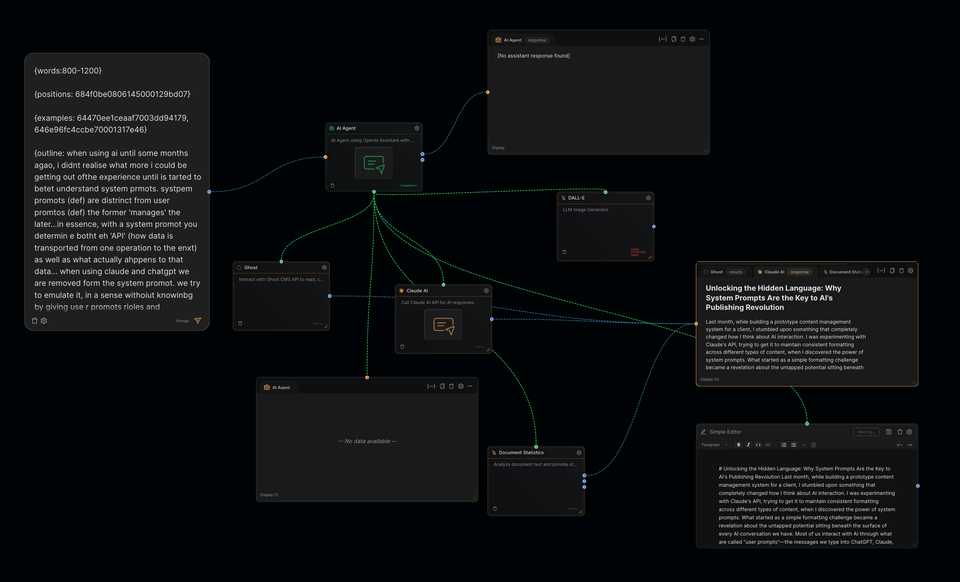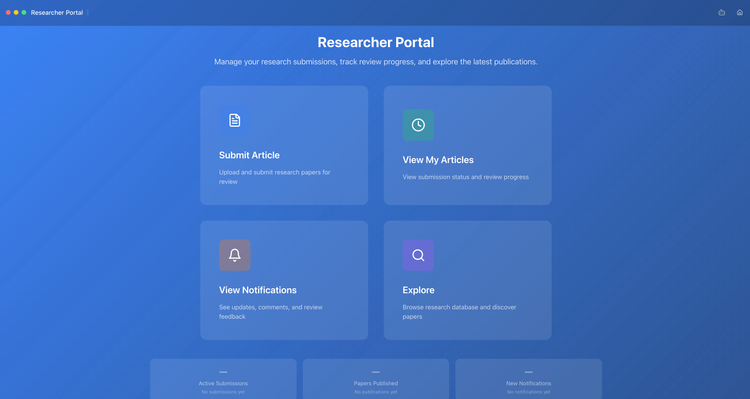Unlocking the Hidden Language: Why System Prompts Are the Key to AI's Publishing Revolution

Most of us interact with AI through what are called "user prompts"—the messages we type into ChatGPT, Claude, or any other AI interface.
But there's another layer, largely invisible to end users: system prompts. These are the foundational instructions that shape how an AI behaves, thinks, and responds before you even start talking to it.
Think of it this way: if user prompts are the conversation, system prompts are the personality, expertise, and behavioral framework that determines how that conversation unfolds.
The Vision: Transforming AI from Tool to Workflow Engine
Here's where things get interesting for those of us in the publishing and knowledge creation space. System prompts don't just change individual interactions—they transform AI from a reactive tool into a proactive workflow engine.
Imagine an AI that doesn't just help you write, but one that understands your publication's voice, knows your editorial standards, maintains your style guide automatically, and can seamlessly transition between different content types—all without you having to explain these requirements in every single conversation.
System prompts represent the ability to encode not just technical specifications, but the intangible qualities that make content work. The rhythm of your sentences, the level of technical depth your audience expects, the way you balance accessibility with authority. These aren't just stylistic choices; they're the DNA of successful publishing operations.
When system prompts become accessible and customizable, we're not just getting better AI responses. We're getting the building blocks for entirely new kinds of publishing workflows that can adapt, learn, and maintain consistency at scale.
The Problem: Operating in the Dark
Currently, most AI interactions happen in a kind of "prompt amnesia" mode. Every conversation starts from scratch. You spend the first few exchanges explaining your context, your needs, your preferences—essentially rebuilding the same foundation over and over again.
For content creators and publishers, this creates several critical limitations:
Inconsistent Output Quality: Without persistent behavioral guidelines, AI responses vary wildly in tone, depth, and approach, even when working on similar tasks.
Cognitive Overhead: Users exhaust mental energy on setup and context-setting instead of focusing on creative and strategic work.
Workflow Fragmentation: Each AI interaction exists in isolation, making it nearly impossible to build coherent, multi-step content processes.
Limited Specialization: Generic AI responses often lack the domain-specific knowledge and behavioral patterns that make content truly effective.
Compare this to how we currently work around these limitations. We create elaborate role-playing scenarios ("Act as a senior technical writer with expertise in..."), maintain complex prompt libraries, and constantly copy-paste behavioral instructions. It's functional, but it's also exhausting and inefficient.
The translation gap between what we want the AI to do and how we have to communicate those wants is enormous. We're essentially speaking a foreign language every time we want to accomplish something sophisticated.
Liberating Potential: The Next Interface Evolution
When system prompts become user-accessible and customizable, everything changes. This isn't just about convenience—it's about unlocking entirely new categories of AI utility.
Persistent Expertise: Imagine AI assistants that maintain deep, consistent knowledge about your specific industry, audience, and goals across all interactions. No more explaining your business model or target demographic in every conversation.
Workflow Continuity: System prompts enable AI to understand its role in larger processes. An AI configured for content strategy thinks differently than one configured for copyediting, and both think differently than one configured for technical documentation.
Collaborative Intelligence: When multiple team members can share and build upon the same system prompt configurations, AI becomes a collaborative platform rather than just an individual tool.
Dynamic Specialization: Different projects require different approaches. System prompts allow for rapid reconfiguration without losing the accumulated intelligence from previous work.
System prompts are still missing from most people’s mental map of AI. Yet they’re the real frontier—the layer where we stop treating AI as a chatbot and start treating it as infrastructure.
Learning to design, refine, and collaborate on system prompts isn’t just a technical skill—it’s a new literacy. It’s how we’ll build shared intelligence systems that remember, adapt, and evolve with us.






Member discussion